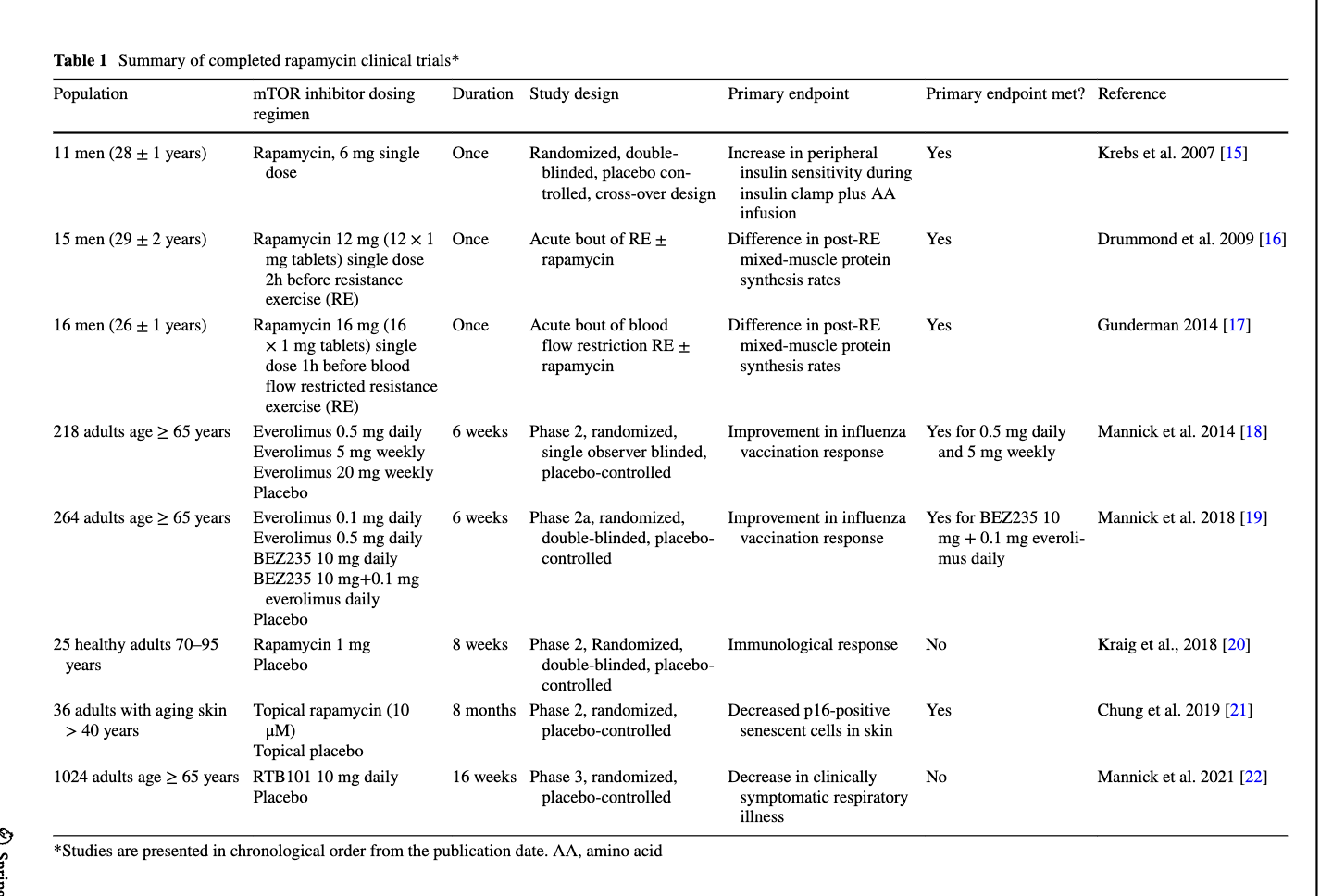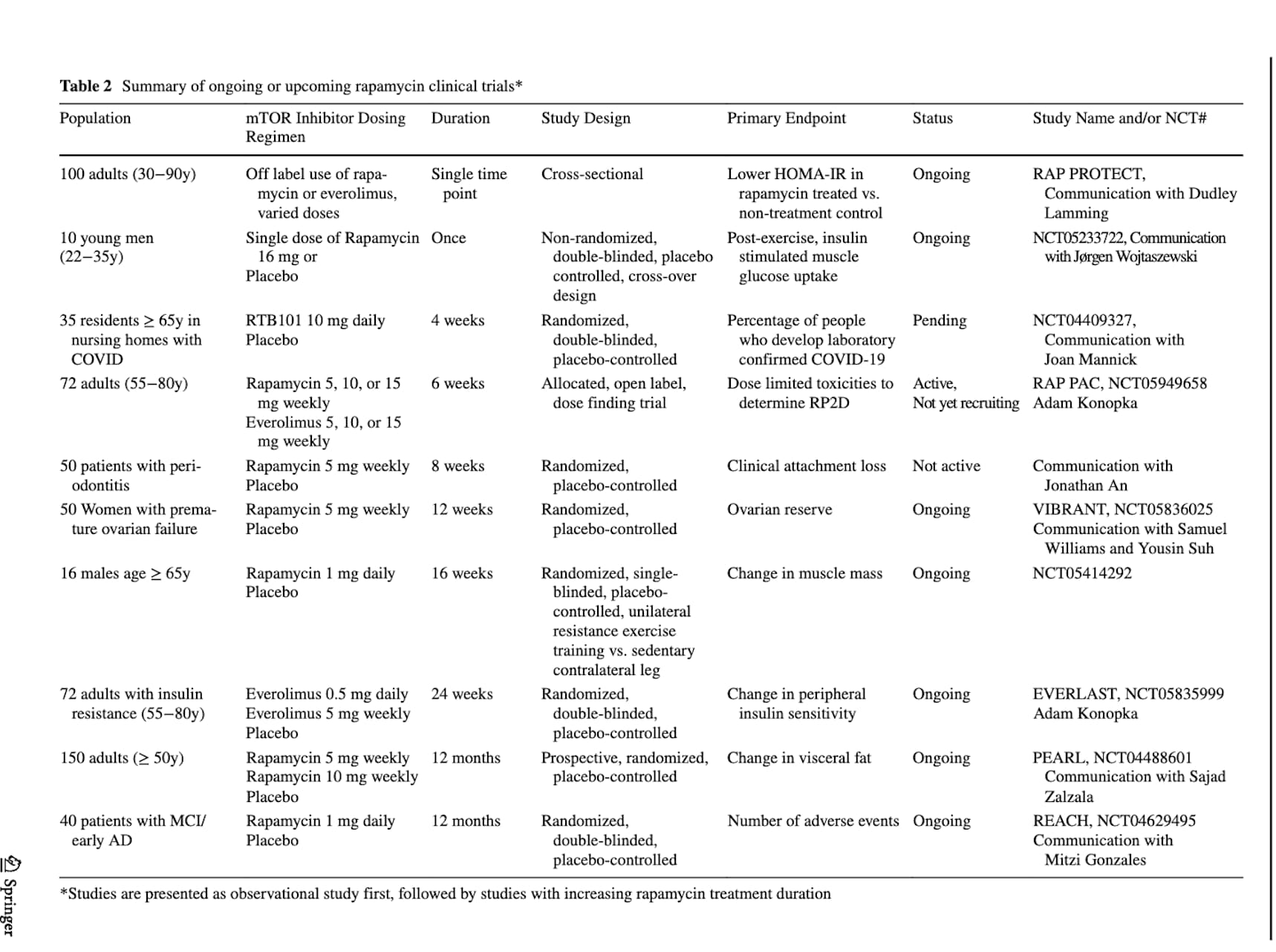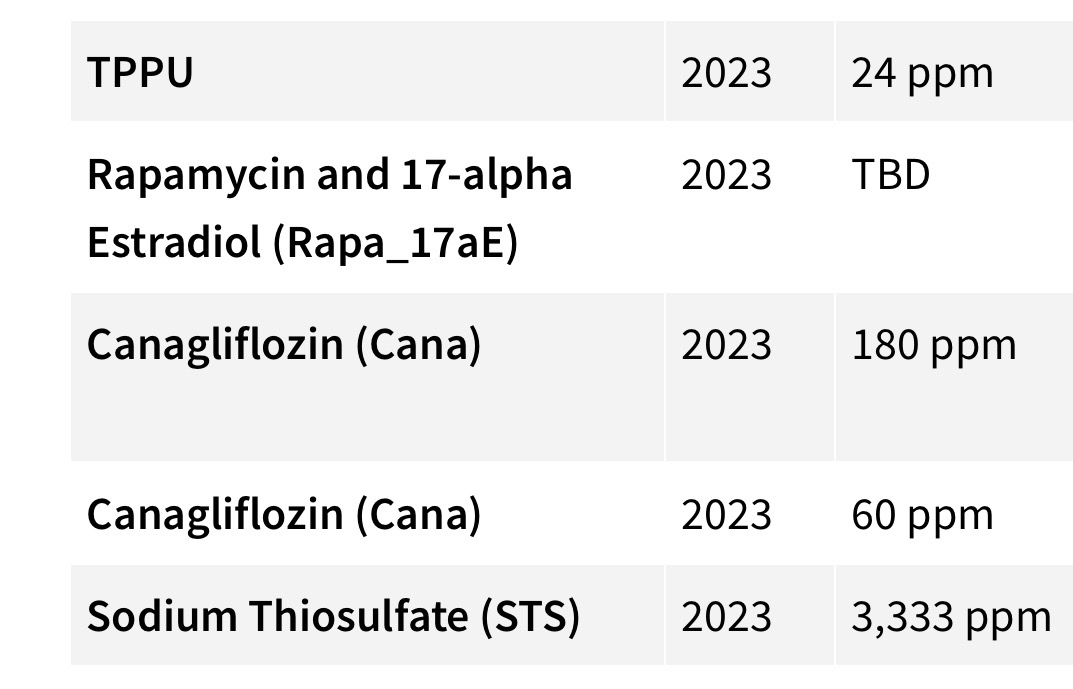One thing I find interesting is that the AKG dose (which they typically arrive at by discussing with the leading researchers on that compound (ie. likely Brian Kennedy for AKG), is 20,000ppm, which is something around 15 grams a day in human terms. A very high dose. Also - I wonder what version of AKG they are using - is it Ca-AKG or something else?
Any reason
Compound
Dimethyl Fumarate (DMF) Cohort
2019 Concentration in Food
120 ppm Age at Treatment Initiation
9 mo or 16 mo
Is not in your list, I thought that was still in progress or missed the readout from that if it’s now complete
No reason really - I was just focusing on the newer drugs / supplements that had not been reported on much.
But I’m not at all familiar with Dimethyl Fumarate - have you done any research on it? I don’t know the status on it. Of course, most ITP drugs do fail at improving lifespan … but it does look promising…
The precise mechanism of action of dimethyl fumarate is not clear. Dimethyl fumarate and monomethyl fumarate can activate the transcription factor (Nuclear factor erythroid-derived 2)-related factor 2 (Nrf2) pathway and monomethyl fumarate has been identified as a nicotinic acid receptor agonist in vitro.[4] In mice that lack Nrf2 expression, however, dimethyl fumarate is still able to modulate the immune system, which indicates that Nrf2 is not required for its immunomodulatory action.[31] For psoriasis, the mechanism of action is believed to be due to the interaction of monomethyl fumarate and the intracellular reduced glutathione of cells directly involved in the pathogenesis of psoriasis. The interaction with glutathione leads to the inhibition of nuclear translocation and the transcriptional activity of the nuclear factor kappa-light-chain-enhancer of activated B-cells (NF-κB).[26]
And it seems pretty safe:
Adverse effects
In the treatment of psoriasis, the most common adverse events are gastrointestinal events, flushing and lymphopenia, which are usually mild. Other adverse events include progressive multifocal leukoencephalopathy (PML) and Fanconi syndrome, which are considered rare.
It may be a better and pharma quality way to go after the Nrf2 pathway that seems to be the main mechanism for why Protandim succeeded in ITP.
As often is the case, DMF may also overlap with some of the rapa / met pathways, but does seems to have - it’s key/main axis that is different and could be complementary and if I recall correctly seems good for neuro aspects and inflammation.
See last discussion here
I think it would be valuable to do some in-depth research on all the compounds that are being evaluated - pros and cons / potential side effects. These compounds have all been judged by Richard Miller and his team as the most likely compounds to improve lifespan - so they’ve reviewed a lot of data on them. Its going to be 4+ years before all the data is out on them. If something is high potential, and low risk / side effects - it may make sense to try them out and track biomarkers closely to see the effect.
And I also need to reach out to Ora Biomedical to see if they can share any data in terms of good compounds that when combined have extraordinarily good or bad outcomes in nematode testing…
Could be interesting to connect
-
to what mechanism(s)
-
to what “hallmark(s)” of aging and
-
to what key aspects of healthy aging/longevity
— eg I feel quite ok re cardio vascular, metabolic and “frailty” areas of actions, protocols and risk mitigation,
— but feel a lack of things for anti cancer, long term neurodegeneration and overall true life extenders in a person who generally has optimized the basics.
I asked them about the super high dose used previously and suggested that they test a lot lower dose next time. I’m not sure if they took that suggestion of mine or why they decided on testing 800 ppm. While I’m glad they’re testing lower than last time, I think it’s still too high of a dose, for practical purposes. The dose they tested already, 4000 ppm, is equivalent to about 2 g daily for an adult human while 800 ppm is more equivalent to 400 mg daily. Much better but still a kind of impractically high dose. It will be interesting to see the results.
I’m glad to see they are testing DNP. I have been waiting for someone to replicate the old life span study that found that it extended life span in mice, IIRC.
Taurine Study:
Combination of Taurine and Black Pepper Extract as a Treatment for Cardiovascular and Coronary Artery Diseases
My first suggestion for ITP testing would be dietary nucleic acids: DNA + RNA. There’ve been six prior studies in mice and rats where they were either fed or injected. Previously discussed here. These hold the record for life extension. It was a mix of DNA and RNA that produced the largest increases rather than RNA alone. Perhaps a 50:50 mix should be tested.
These have largely been forgotten by researchers. If ITP can validate these older studies it may renew research interest.
the Kraig trial (phase 2, 2018) had no immunological response, I wonder what biomarkers they used.
Hmmmm… That’s a lot of Cana. Isn’t there anything better to test?
Feeling slightly disappointed.
I tend to agree. But - given the great results so far, I guess they’re trying to figure out if a low, persistent dose is at all effective. That would translate easily and quickly to humans I suspect with low risk.
Don’t know if it has been suggested before but I’d like to see Verteporfin tested. Probably needs to be injected though, which is a real bummer.
They won’t do injectables.
TPPU. Another one that seems to be involved in suppressing NF-κB signalling…
also seems involved in increasing the expression of tight junction proteins (that I think some people where discussing elsewhere on the forum).
Anyone know more about this compound?
TPPU restored the mechanical and thermal thresholds, decreased cell apoptosis, alleviated axonal injury and glial responses, and protected vascular permeability by increasing the expression of tight junction proteins. TPPU relieved PIPN by inhibiting the activation of the sEH and NF-κB signalling pathways by decreasing the levels of inflammatory cytokines and oxidative stress.
Any idea why they’re hitting H_2S so hard? They’ve tried pure sulfur (SG1002, a very specific preparation of 0-valent S) three times, with the summary reporting 2 failures and 1 in progress. (The first trial was apparently mis-dosed, IIRC). They already have a STS trial running. I think the main sulfur guy is a friend of Miller’s, but I’d have expected more positive results to be published for the amount they’re chasing this.
After looking more closely I don’t think this is a viable drug for the application – too toxic, hard to administer. I was briefly enthusiastic reading the Wikipedia page which said that it has been investigated for fibrotic disease, at least Peyronie’s if I recall. Turns out that was only in vitro stuff, not a serious suggestion.
The alleged action was through YAP, which to my limited knowledge is mostly involved in cell mechanics. Hence my continued (fruitless) agitation to test fasudil in more models.



